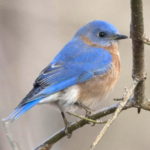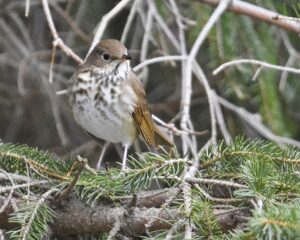
Lumberton Campus 26th Winter Bird Census, January 22, 2025
Censusing started at 8 AM with a temperature of 16 degrees but little to no wind except in the open areas by the creek. Still waters were frozen, and the creek was mostly frozen after a week of cold weather.











